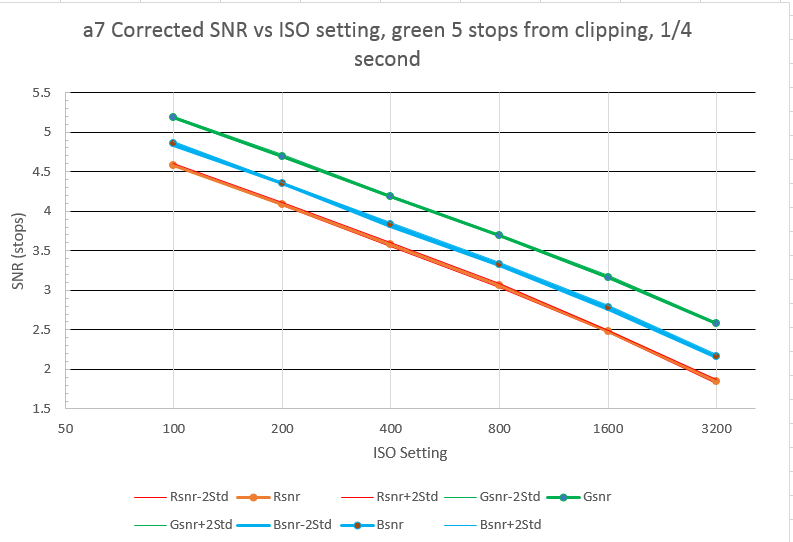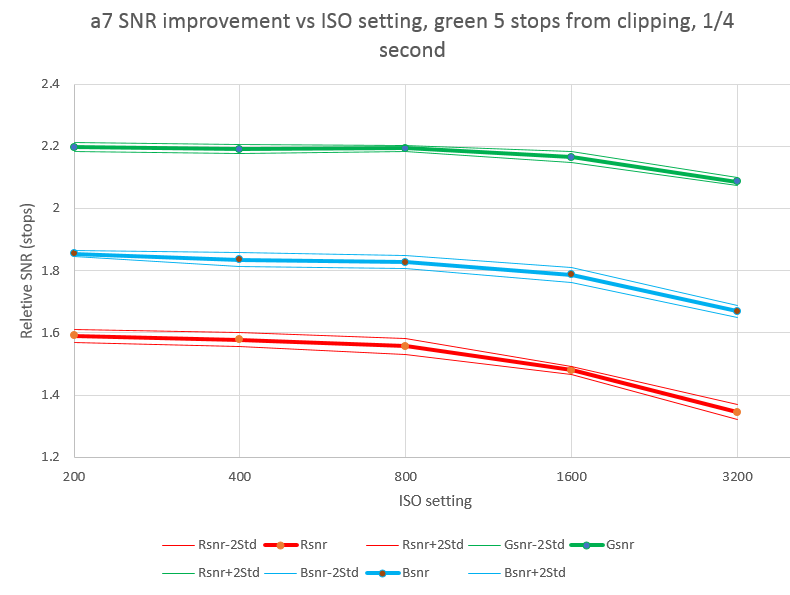Yesterday I presented results that indicated that the a7 was “ISOless” using data made with strobe exposures at a shutter speed of 1/200 second. We have seen anomalies in noise floor measurements made at shutter speeds above 1/15. Therefore it seemed like a good idea to rerun the tests with a longer shutter speed. I could have still used strobe illumination, but, since I had to redo the tests anyway, I chose the Fotodiox LED-200WA-56, which allows control of the light level without appreciable change to the spectrum. I used a Heliopan variable ND filter to get the light levels down to something I could use at a quarter second shutter speed, and did the light changing with the Fotodiox except for the ISO 3200 exposures, where the Fotodiox steps got so far apart I had to tweak with the ND filter.
I ended up with green raw values of about 380, red ones of about 170, and blue values of around 240. For the rest of the methodology, please see the preceding post.
I needn’t have worried about shutter speed differences. Here’s the data uncorrected for illumination falloff:
And here it is falloff-corrected:
Same answer as before. The a7 is ISOless with respect to shadow/low midtone SNR. It looks like the dark noise shutter speed dependence doesn’t extend up into the part of the tone curve with raw counts of a few hundred. A word about the raw counts on the a7. The camera advertises itself to the raw converter as a 14-bit camera, so full scale is 16383.


Leave a Reply